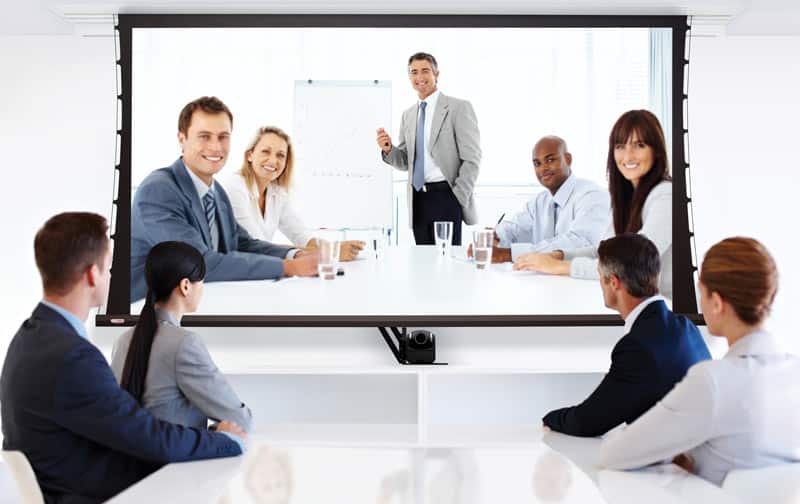Video conferencing apps naturally need cameras in order to function. The problem is that a lot of people do not know how to use these tools, much less set them up properly. Let’s walk through how users offsite and onsite can make the best of what they have in terms of the camera they have on board, and how room-based setups don’t have to distract from the subjects at hand.
On the Road
First, you are not stuck holding the selfie stick. There are a lot of tripods and stands that can elevate your device to a good angle for conferencing. You want the person at the other end of the camera to see you, not have them only be able to see your left eyebrow. The camera should automatically be set for video conferences so that you can see the screen and use your camera at the same time. If you need to use the device during your meeting, try adding Bluetooth wireless webcams. You should also use a headset with background noise reduction.
You may not have a lot of choices when you’re on the road, particularly when it comes to the location where you decide to join the meeting. Still, try to find a place that’s as quiet and well-lit as possible, and aim for one that is available for the length of time that the meeting will take. You may end up in your car or at the coffee house, or tucked up in the corner of an airport lounge. It’s also possible to book a room at a nearby hotel for a “day rate” or a “micro stay” of just a few hours, according to ABC7.com. This way, you have both a quiet environment and some privacy for your meeting.
At the Desk
Meetings from your desk allow you to have a bit more flexibility about your setup. Camera setups can be as one-step easy as downloading a solution such as Blue Jeans to your laptop, tablet, or phone, or complicated when it comes to picking the best video conferencing cameras for IT. You’re not limited to an onboard camera or equipment, and can even add lighting. Again, Bluetooth is your friend, whether you are working from home or from your desk at the office. A Bluetooth dongle can handle up to seven devices, or you can use a plug and play webcam and mic. Both of these can provide high quality sound and video. According to PC Gamer, you can even set up a streaming studio for about $150 if you are going to be attending a lot of web meetings and seminars.
Your camera position should give attendees a head and shoulders presentation, or at best, a waist-up news anchor presentation. You want to avoid being a talking floating head, which can make a terrible impression on your audience, especially when viewed on a large screen. However, don’t position the camera so far away that it’s as if you’re not in the room at all.
Room Venue
How you set up your cameras depends on what type of meeting you’re hosting. Is it a moderated panel? Are there going to be multiple speakers? Do you have the use of a podium? Will there be a large screen display? Will the participants be seated at a conference table? Will there be question and answer sessions? All of these details have to be taken into consideration before setting up your video and audio. Directionless mics and multiple cameras may work best, allowing everyone to view speakers clearly.
Appearance Tips
There are a few things that you need to know about being on camera if you haven’t used video conferencing before. Your appearance is very important, and you want participants to concentrate on your presentation, not the eye-watering effect that your screaming orange shirt and shiny nose have on the camera. A quick once-over with a facial wipe or oil-blotting paper can help immensely, as will applying any necessary make-up that matches your skin tone. Men should at all times avoid Orange Guy effect, which makes you look either like a monster or someone who has had body paint applied all over. Clothing should tend towards mid-tone colors. Anything too light or dark, in a highly saturated color, or in a strong pattern can render bleed or glare on video. Glasses often come these days with anti-glare treatments, so give your intended outfit and your face a screen test before the actual event.
Ready on the Set
Nobody expects newcomers to be perfect, but assembling a folder with an agenda, tip sheets, and how-to guides is a great way to get everyone on the same page. In time, your meetings will become a lot smoother, and you’ll notice the difference that HD quality output makes. You’ll also find that communication between teams improves drastically when everyone can see and hear the people they work with. Remember, you can have a Fortune 500 experience without necessarily having a Fortune 500 budget.
